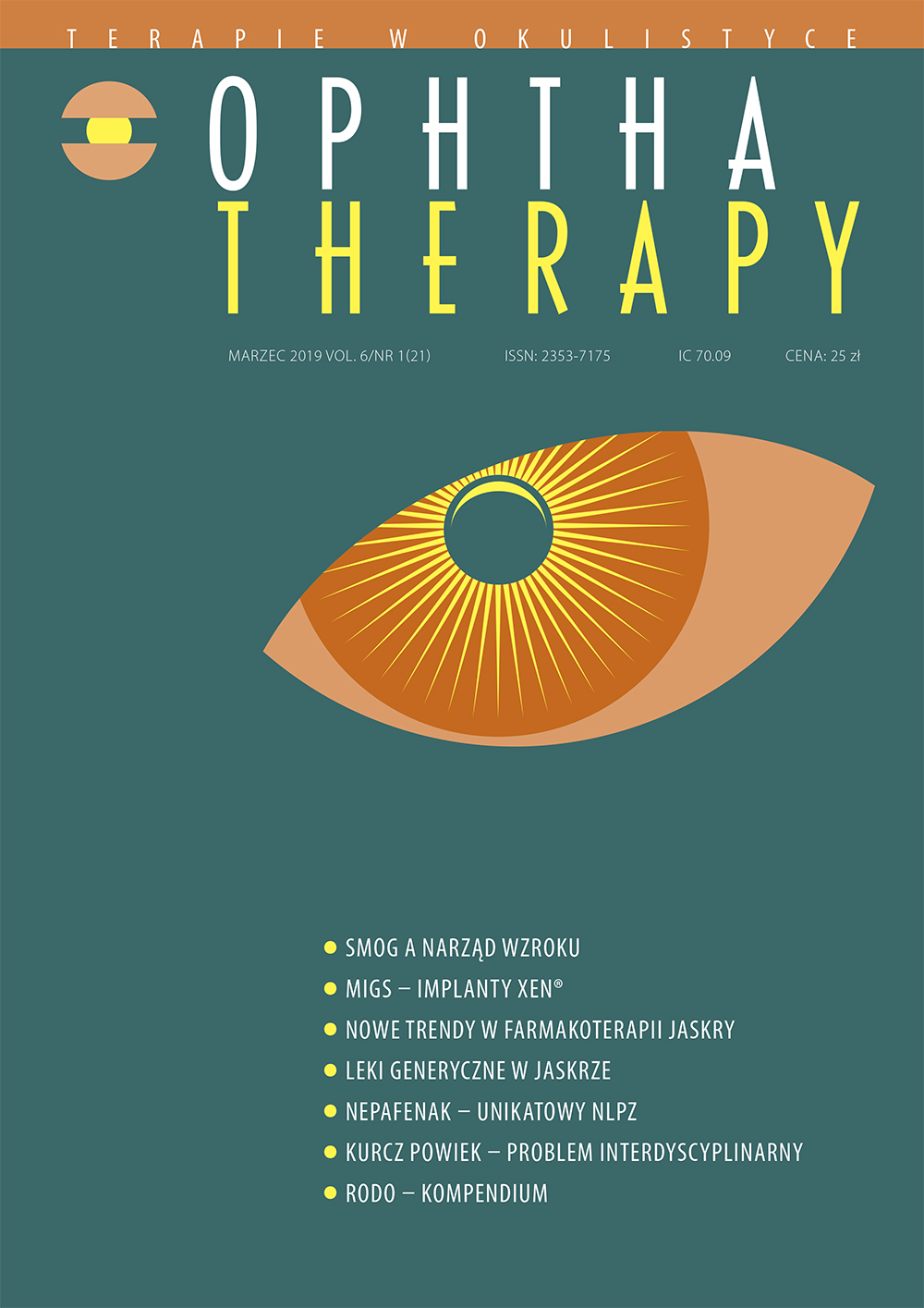Nepafenak w praktyce lekarza okulisty – co decyduje o jego skuteczności i bezpieczeństwie stosowania?
##plugins.themes.bootstrap3.article.main##
Abstrakt
W terapii zapalnych chorób narządu wzroku okulista staje niejednokrotnie przed niełatwym wyborem strategii leczenia farmakologicznego. Warto pamiętać, że dostępne leki okulistyczne mogą zasadniczo różnić się między sobą, stąd tak istotne jest uwzględnienie profilu farmakokinetyczno-farmakodynamicznego stosowanych leków. Odmienne mechanizmy działania, a także różna tolerancja miejscowo stosowanych leków mogą wpływać zarówno na efektywność, jak i bezpieczeństwo leczenia.
Pobrania
##plugins.themes.bootstrap3.article.details##

Utwór dostępny jest na licencji Creative Commons Uznanie autorstwa – Użycie niekomercyjne – Bez utworów zależnych 4.0 Międzynarodowe.
Copyright: © Medical Education sp. z o.o. License allowing third parties to copy and redistribute the material in any medium or format and to remix, transform, and build upon the material, provided the original work is properly cited and states its license.
Address reprint requests to: Medical Education, Marcin Kuźma (marcin.kuzma@mededu.pl)
Bibliografia
2. Kim SJ, Flach AJ, Jampol LM. Nonsteroidal anti-inflammatory drugs in ophthalmology. Surv Ophthalmol. 2010; 55: 108-33.
3. Jones B, Neville MW. Nepafenac: an ophthalmic nonsteroidal antiinflammatory drug for pain after cataract surgery. Ann Pharmacother. 2013; 47: 892-6.
4. Guo S, Patel S, Baumrind B et al. Management of pseudophakic cystoid macular edema. Surv Ophthalmol. 2015; 60: 123-37.
5. O’Brien TP. Emerging guidelines for use of NSAID therapy to optimize cataract surgery patient care. Curr Med Res Opin. 2005; 21: 1131-7.
6. Schoenberger SD, Miller DM, Petersen MR et al. Nepafenac for epiretinal membrane surgery. Ophthalmology. 2011; 118: 1482.e1-82.e3.
7. Naithani P, Puranik S, Vashisht N et al. Role of topical nepafenac in prevention and treatment of macular edema after vitreoretinal surgery. Retina. 2012; 32: 250-5.
8. Gamache DA, Graff G, Brady MT et al. Nepafenac, a unique nonsteroidal prodrug with potential utility in the treatment of trauma-induced ocular inflammation: I. Assessment of anti-inflammatory efficacy. Inflammation. 2000; 24: 357-70.
9. Colin J, Paquette B. Comparison of the analgesic efficacy of nepafenac ophthalmic suspension compared with diclofenac ophthalmic solution for ocular pain and photophobia after excimer laser surgery: a phase II, randomized, double-masked trial. Clin Ther. 2006; 28: 527-36.
10. Durrie DS, Kennard MG, Boghossian AJ. Effects of nonsteroidal ophthalmic drops on epithelial healing and pain in patients undergoing bilateral photorefractive keratectomy (PRK). Adv Ther. 2007; 24(6): 1278-85.
11. Gomi F, Sawa M, Tsujikawa M et al. Topical bromfenac as an adjunctive treatment with intravitreal ranibizumab for exudative age-related macular degeneration. Retina. 2012; 32: 1804-10.
12. Sahoo S, Baruna A, Myint KT et al. Topical non-steroidal anti-inflammatory agents for diabetic cystoid macular oedema (review). The Cochrane Library. 2015; 2: 1-17.
13. Ke TL, Graff G, Spellman JM et al. Nepafenac, a unique nonsteroidal prodrug with potential utility in the treatment of trauma-induced ocular inflammation. II. In vitro band permeation of external ocular barriers. Inflammation. 2000; 24(4): 371-84.
14. Cardascia N, Palmisano C, Centoducati T et al. Topical nonsteroidal anti-inflammatory drugs as adjuvant therapy in the prevention of macular edema after cataract surgery. Int Ophthalmol. 2017; 37: 1127131.

